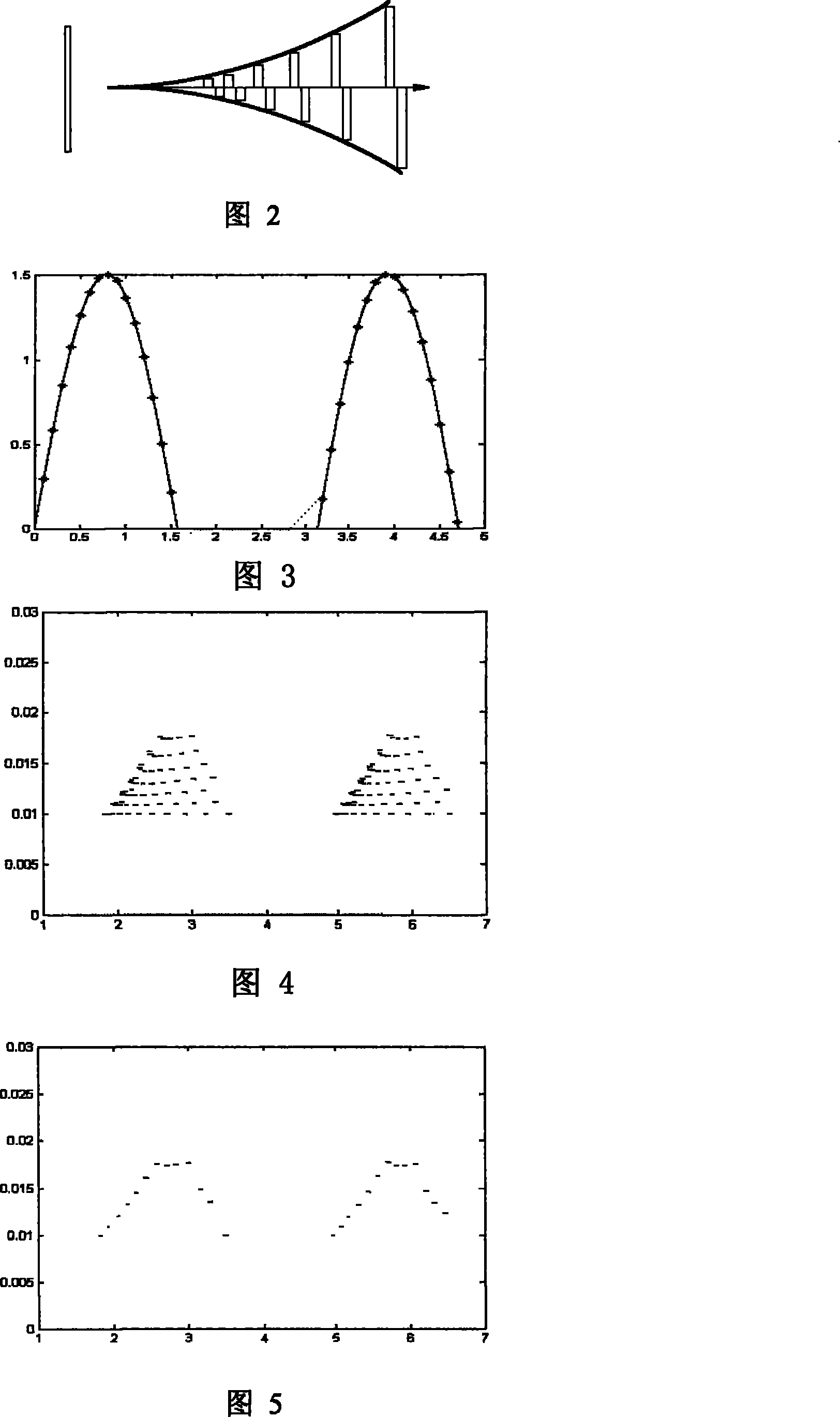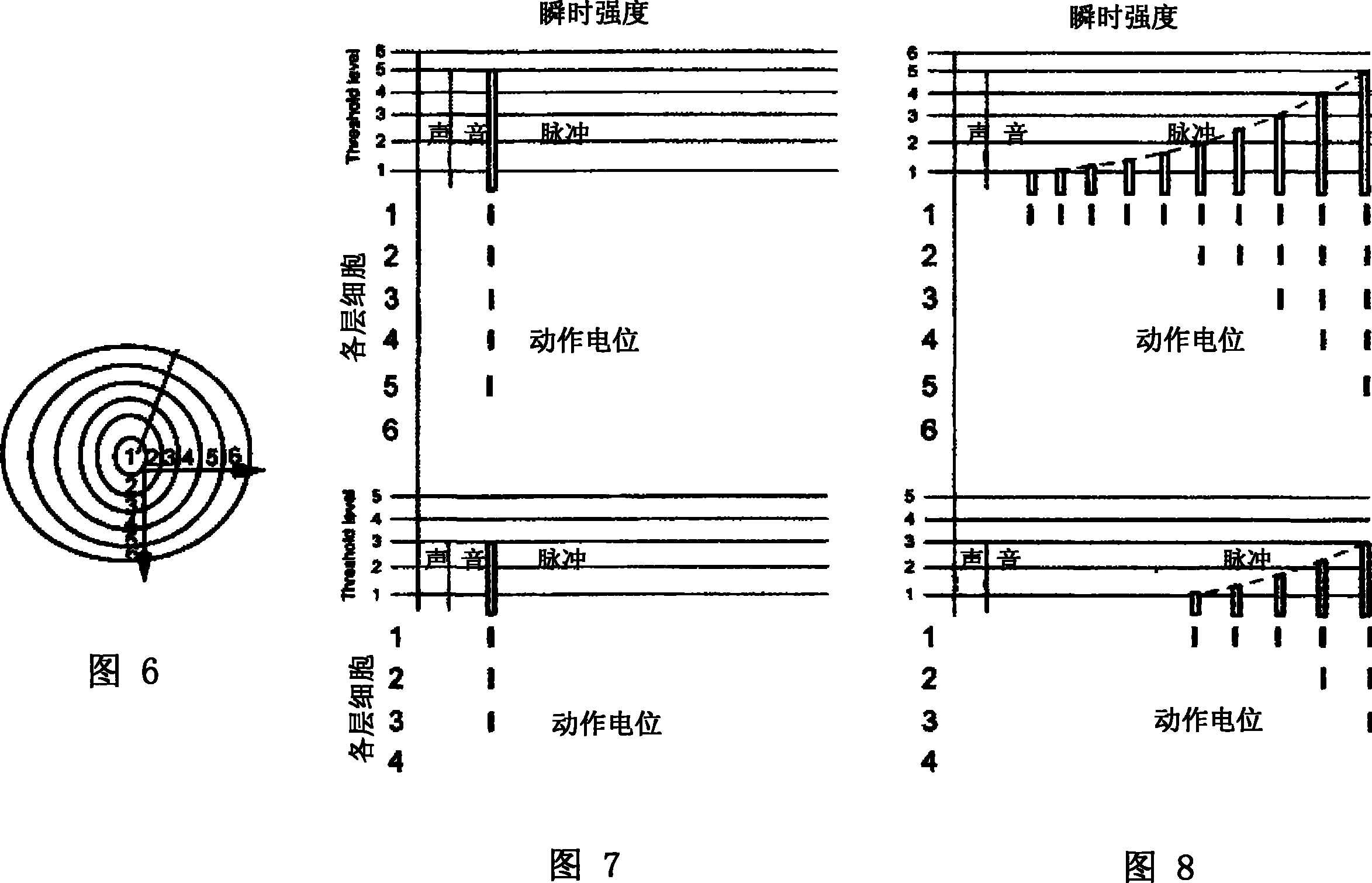Artificial cochlea implementation method using the ATF coding technology and ATF artificial cochlea
An ATF coding and cochlear implant technology, applied in medical science, speech analysis, instruments, etc., can solve the problem of not being able to reflect time difference, unable to express the time coding, transmission and processing characteristics of auditory center, and unable to express different timing of multiple neurons. Sex and other issues, to reduce mutual interference and improve sound quality
- Summary
- Abstract
- Description
- Claims
- Application Information
AI Technical Summary
Problems solved by technology
Method used
Image
Examples
Embodiment 1
[0045] Please refer to Fig. 1, the present invention provides a kind of cochlear implant implementation method that adopts ATF coding technology that makes cochlear implant more tend towards human ear function, and this method comprises the following steps:
[0046] (1) Sound amplitude signal extraction
[0047] The sound signal is first filtered through acoustic-electric conversion (or / and Fourier transform), rectified and low-pass filtered to extract the amplitude envelope wave and compress it, and then perform continuous interval sampling on the amplitude envelope wave and extract the instantaneous amplitude (I) (optional Therefore, when the sampling rate is high, the envelope wave extraction may not be performed). This step can be carried out using existing methods in the prior art.
[0048] (2) Conversion of stimulus onset time (T)
[0049] The instantaneous amplitude signal extracted in step (1) is converted according to the following formula (1),
[0050] T 0 =αe -...
Embodiment 2
[0071] Please refer to Figure 9, the present invention provides an ATF cochlear implant, which mainly includes:
[0072] 1. Sound signal input module:
[0073] This part mainly includes a microphone and an automatic gain amplifier for sound-electric conversion and amplification. Its working steps are as follows:
[0074] (1) Sound signal input
[0075] The broadband sound signal is firstly converted by the microphone and then amplified by the automatic gain amplifier (Figure 10).
[0076] 2. Sound signal processing module (device):
[0077] This part mainly includes a band-pass filter, a rectifier, a low-pass filter, a compression module, and a voice coding module. stimulus signal. Its working steps are as follows:
[0078] (2) Filter frequency division
[0079] Several (usually select 1~24, such as 5, 10, 20 etc., select 4 in this embodiment) narrow-band filter (total bandwidth does not exceed 20-20kHz, such as 50Hz, 100Hz, 500Hz, 2kHz, 5kHz, 15kHz, etc., select 10-30...
PUM
 Login to View More
Login to View More Abstract
Description
Claims
Application Information
 Login to View More
Login to View More - R&D
- Intellectual Property
- Life Sciences
- Materials
- Tech Scout
- Unparalleled Data Quality
- Higher Quality Content
- 60% Fewer Hallucinations
Browse by: Latest US Patents, China's latest patents, Technical Efficacy Thesaurus, Application Domain, Technology Topic, Popular Technical Reports.
© 2025 PatSnap. All rights reserved.Legal|Privacy policy|Modern Slavery Act Transparency Statement|Sitemap|About US| Contact US: help@patsnap.com



